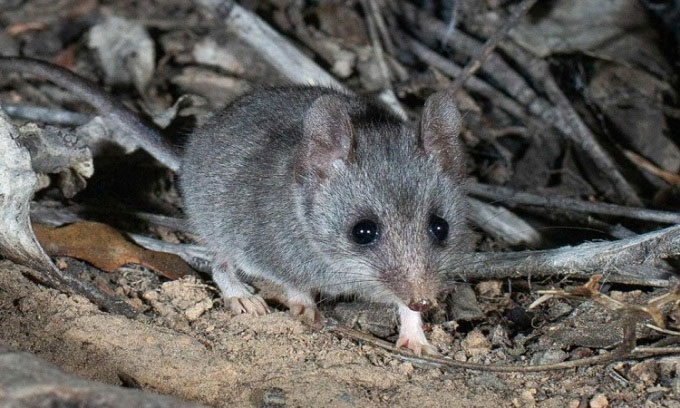A new study published in the journal Scientific Reports has found that feral cats pose a significant threat to the critically endangered population of the Kangaroo Island dunnart.

The Kangaroo Island dunnart is left with a population of about 500 individuals. (Photo: Australian Wildlife)
Researchers examined the stomachs and digestive tracts of 86 feral cats collected from various reserves on Kangaroo Island between February and August 2020. Seven of the cats contained the remains of eight Kangaroo Island dunnarts in their digestive systems. This finding confirms for the first time that feral cats prey on dunnarts and that they are effective predators following bushfires, as reported by a team of experts from the University of Adelaide in the journal Scientific Reports on June 16.
The study highlights the importance of controlling feral cat populations on the island. The combined pressures from the isolated small population, natural disasters such as bushfires, and the predatory behavior of feral cats could lead to the extinction of this vulnerable dunnart species. The research team also discovered the remains of an endangered eastern curlew, revealing that feral cats are preying on many other threatened animals.
The Kangaroo Island dunnart is not as famous as other marsupials like koalas, opossums, or kangaroos, but it is one of the rarest species. This small, mouse-sized animal lives on Kangaroo Island, off the coast of South Australia. Experts estimate that only about 500 dunnarts remain, and they are threatened by feral cats. The International Union for Conservation of Nature (IUCN) lists the Kangaroo Island dunnart as critically endangered. Major bushfires swept across the island in 2019 and 2020, destroying 98% of their habitat.
The feral cat eradication project on Kangaroo Island is part of efforts to reduce the impact of invasive cats on native wildlife. Authorities are capturing feral cats and administering euthanasia. If the program is successful, Kangaroo Island will become the largest inhabited island free of feral cats, providing numerous ecological and economic benefits to the island.


















































